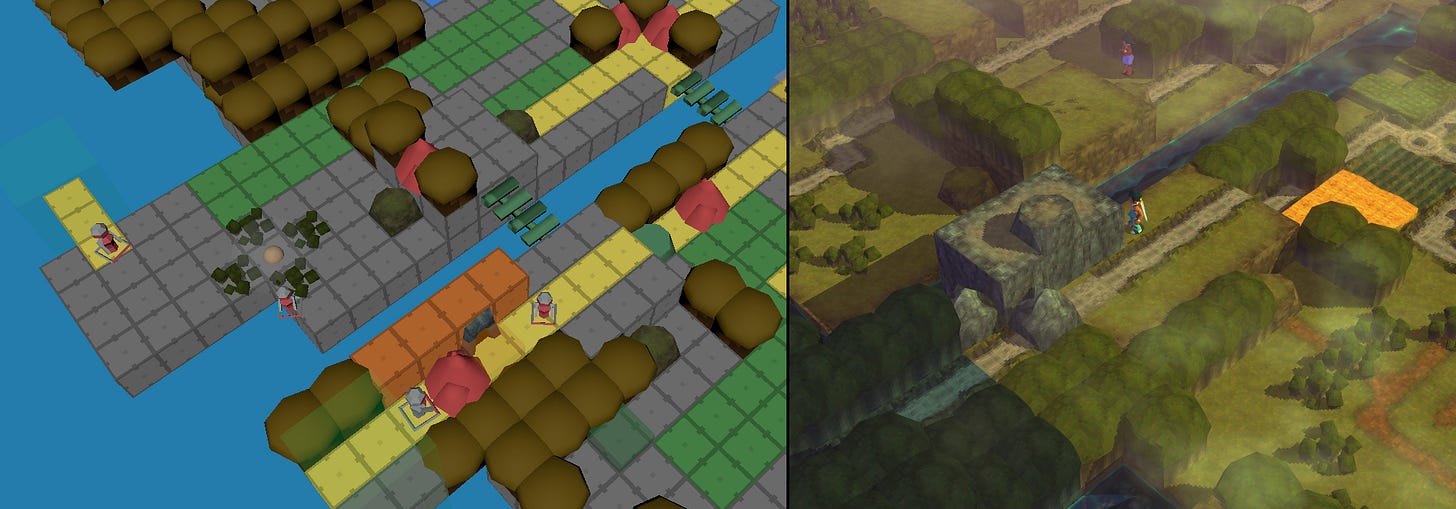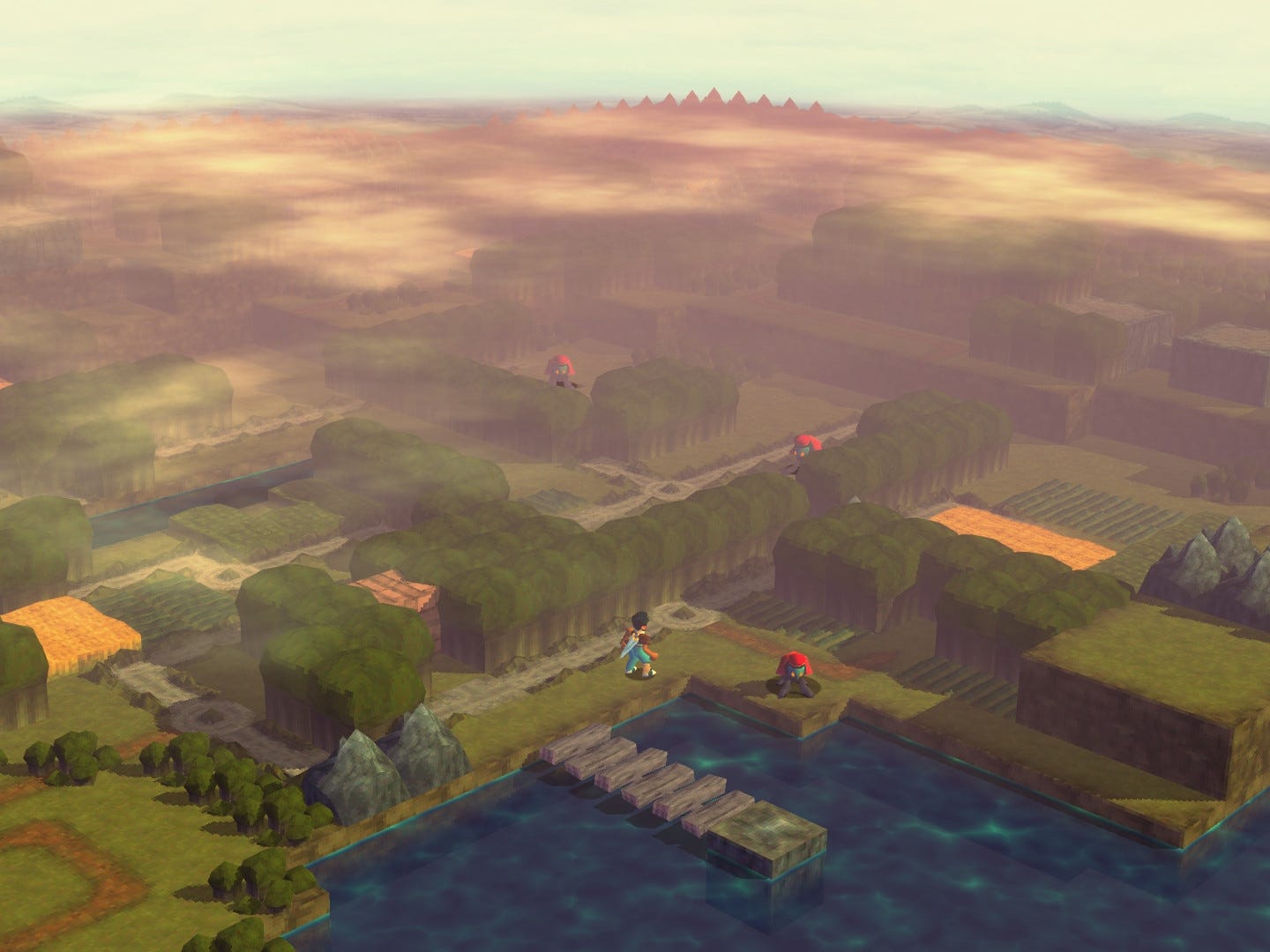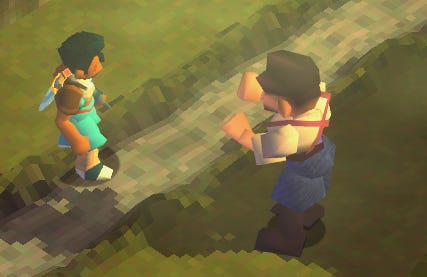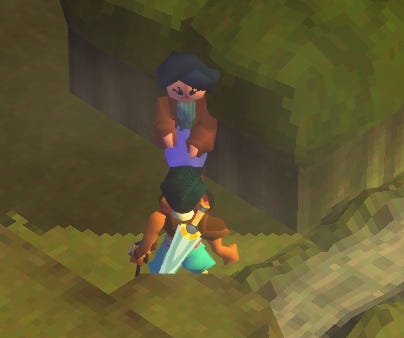Hello! Just stepping away from work for a bit to update you all on Angeline Era’s progress. In my previous update I mentioned being on schedule for a Q4 2025 release. Well, to me that still looks realistic, but I’m not really sure of the precise timing. Personally, I would like to have the game out by mid-December so I can enjoy my holidays and start fresh in 2026. People say to avoid 2nd half of December but… does that really matter nowadays? I feel like the fanbase for Angeline Era tends to lean more towards dedicated action sickos, so I don’t think the timing would matter too much. I also have a bit of confidence that Angeline Era has the most word-of-mouth factor of Analgesic’s games so far (even exceeding Anodyne 2), so idk, it might just be a bit of a slow burn game… and thus release timing isn’t too important.
Well, either way, the game is very much getting done (hooray).
It’s been about 2 months since the last update. Since then things have progressed pretty quickly.
Music & SFX
I finished the soundtrack (yay!). It’s pretty long (2-3 hours), which puts it as my 2nd largest soundtrack behind Even the Ocean. However, ETO honestly has a lot of songs that are maybe a bit drawn out / longer side, so I think in terms of unique musical ideas, ETO and AE are on roughly equal footing (maybe AE comes a bit ahead).
For this final pass on the music, I was doing a lot of cleanup - shorter songs for miscellaneous events, often based on existing drafts, sounds I’ve designed, etc, which makes them pretty easy to do in a few hours (or less).
What was harder were the three remaining action level songs I had put off for a long time, but finally finished. Those tend to take the longest because they have this difficult balance of needing to be energetic and cool, but not exhausting on the ear, and the mixing is often also more difficult and irritating. I think they’re really cool though so look forward to hearing those in-game!
I made another pass on SFX, making another couple dozen or so and filling in missing sounds, mostly with enemies and bosses. There’s still a few left to do but most of what I need is there.
This sound is actually made from a MIDI bagpipe.
Along those lines, I’ve also made plans for the game’s album art, which will probably be released as a double album roughly focusing on the lighter and darker aspects of the music. I’ve commissioned Marina and another person for these, so look forward to seeing them!
Overworlds
As you may know from the above video (or playing the demo), AE’s world consists of several interconnected overworlds. By searching these places you can open up the game’s 100+ (*sweats*) levels, which by beating them (or travelling through) can open up new sections of the overworld. We finished the design and final art passes on all the overworlds, with some revisions and polish here and there. The main motivation for this as it was the biggest blocker to alpha testing which we want to start this month (Oh… it’s almost the end of the month…).
Anyways the overworlds came out really well. I made a few design tweaks (mainly shuffling around areas that should be more out of the way, fixing flows) before passing it off to Marina for the final art and some level design revisions. Finally… everyone can see it as it has been in our heads for a year… ha ha ha!
Marina’s art pass is a bit tricky, because the way the overworlds work, you can’t create too many red herrings with places to search for levels. I tried to keep that in mind with my initial drafts and leave space for flexibility with the clues. After Marina’s pass I helped a bit by testing the overworlds to see if anything seemed misleading.
Each overworld area has a slightly different spatial feel to it and mood. And various secrets to find! It’s a pretty interesting system because you can kinda just gun for the main things or poke around and take your time. Actually it’s basically a simplified open world game in some ways… AAA games, are you listening? Ha ha ha.
Sequence-complete
Idk if this is the right term for it, but I got all the game’s dialogue into the game and playing in the right order/right time. In other words, you can play the game from start to finish as you would in the final game, with the caveat that I didn’t do the step for cutscene programming where you make the characters appear on screen. (more on this later). I think people call this “Sequence Complete”.
This involved a lot of detailed work, like making sure I had a sense of where each line would play, where the fade to blacks are, making suggestions as to additional lines that would be useful to have, figuring out a minimal number of art/scenes we’d need to show the scenes, etc. The conversion from script to spreadsheet is mostly straightforward but it does require a bit of clarification at times.
I also made a portrait pass over the script where I assigned character emotions to each line (for the main characters, Tets, Arkas, and Niamh) who have portraits. This spreadsheet uses the same workflow and format we developed for Danchi Days, making it easy to make and download changes to the script.
But doing this all was useful because I was able to draw up a Event Art task list consisting of missing objects and animations. It looks a bit like this (times 100…). Doing this makes it easy to shift priorities around or just know what to do next.
That being said, getting the game sequence complete also led to making an Event List, where I have each game’s cutscenes (events) and some details (like flags that get set). It looks like this (…times 100…). This will be very useful for when I make my final pass over the cutscenes.
Anyways, the game becoming sequence complete was helpful, because…
Melos’s First 100% Test Play
My main goal with sequence-complete was to be able to do a 100% Test Play, which is what it sounds like: playing the game and seeing and getting everything.
For data… my any% run on Normal difficulty took ~8 hours. Getting to 100% took another 8, for a total of around 16 hours. Normal mode is very easy for me at this point so I didn’t die very often… in other words I’d expect my times to be on the faster ends of things. In other words, this is our longest game yet!! Hmm… but I feel mixed on that because I personally don’t play super long games. But I guess if the game was as cool as Angeline Era, I wouldn’t mind…
Well, either way, the Any% run is satisfying in itself and a good length. I think the 100% is actually fairly rewarding to do… it’s not really like grinding out achievements or something, it’s really just like seeing more of the world and things and interesting levels.
The first 100% test play of games is often very tedious because I’m also drawing up small revisions and bugfixes as I go along. So actually it took me way longer to get through this playthrough since I would often have to stop and fix and adjust stuff.
My adjustments were usually fairly minor, from small things I overlooked (doors going the wrong place), balance adjustments (money rewards from searching), adding or removing items/money to levels.
The more valuable aspect of the playthrough (other than wow! Being able to play AngEra!) was probably getting a sense for balance issues. In particular I made a few minor tweaks to some of the number economies in the game (blah).
Money (I reduced rewards generally across the board from chests/searching)
Slightly reduced max level stats so that the difficulty curve over the game, so that early-game areas don’t become too trivial. Basically I just want the level curve to make it feel safer to go to later-game areas, but I don’t want the challenge to vanish in the earlier levels too much.
Overkill rules changes: there was a rule where if you overkill an enemy (do over 2X its HP in one hit), you one-shot it: otherwise, it endures at 1 HP. But the problem was that at an endgame level, too many enemies become overkillable, and it adversely affects how the game feels in early-game stages. The game feels better when enemies that look 2 or 3-shottable remain that through the game. So I tweaked overkill rules. Enemies below a certain max HP (e.g. the Bats) remain one-shottable, while others will always require at least 2 hits to die, unless you critical crush them into a wall, which lets you OHKO them.
Maybe more important than that though was I was able to get a sense of parts of the game where Tets’ presence starts to waver. Basically, one narrative challenge with this game is that there can be long stretches without main story stuff. It’s subtle, but I want to maintain the presence of Tets as a character to the extent we can… so sometimes Tets responds to NPCs with very minor text, etc. It’s more to establish that he’s there, rather than like be its whole new plot point.
Additional Writing
I forget the timing, but from these thoughts and test plays, I asked Marina to write some additional lines here and there as well. These are for moments I thought could use better pacing or some additional info. Doing the game’s test play was also useful for deciding where this text would go, at times, if it wasn’t already associated with a main story event. It actually led to some important shuffling around of these events so that players are a lot less likely to miss them in what’s otherwise a very open game.
NPC Art
Over this time Marina also worked towards finishing up more NPCs and rigging them. Now there’s some people idling around the game who react when you bump into them!
I decided not to rush on adding these in all right away when they were done in June/July, since there’s a lot of levels and moving parts.
After my 100% playthrough, finishing Music and SFX, I began a (currently in-progress) lookover of the game to note down all the game’s NPCs and if they were missing any art or animations. Most of what’s needed is there, though. In some cases I feel like a level could just use a bit of someone talking briefly so I add a line or two there.
I made another spreadsheet for this text, which will be helpful if I end up having any additional text requests for Marina, but I think it’ll be pretty minimal at this point as we’re looking to start some localization in September.
Other
In a big project like this, there ends up being a lot of random stuff you forget to do here and there. Stuff like fixing parts of the UI, adding weapon effects, adding visual feedback to certain things, bugfixes... So now and then I’ll take care of a few tasks.
Current Stuff
As of writing I’m most of the way through another lookover of the game, focused on the NPC stuff above, but also some minor other tasks.
Marina is currently finishing up a basic art pass on some remaining levels before shifting to final art passes where she will add trees, bushes, details, lighting, weather etc. I might help with placing trees. Other than that, there’s some NPC rigging, a few missing enemies, some missing animations here and there, and a little bit of UI work.
As those come in, I will be jumping around finishing up the cutscenes, while also starting some playtesting with others soon, which will likely find some new bugs to fix. Because the task list is a
Then eventually… the game will be done, and we’ll release it on Steam, hopefully this year!










This is awesome! I've always wondered what engine Angeline Era was programmed in/what tools you made for it.
The gameplay and level design always felt incredibly robust, like lots of things would have very small unique behaviors.
I started playing Ys: The Ark of Napishtim in preparation. Very excited and thank you for behind the scenes look!